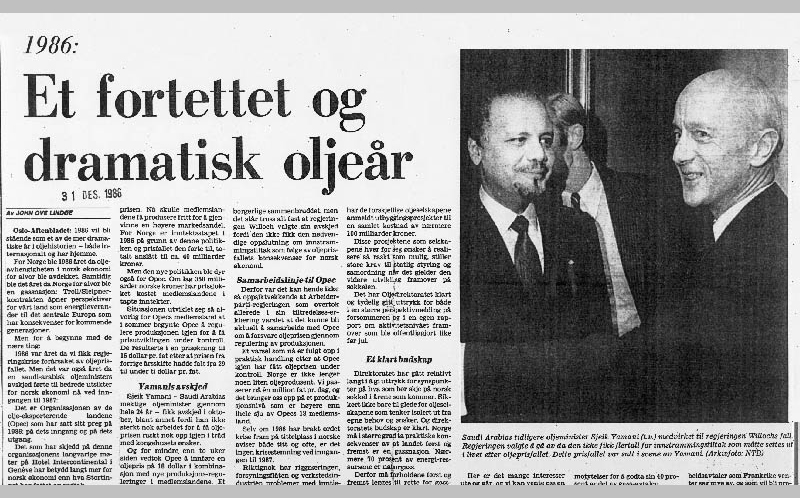Oil price slump

The high oil prices of the early 1980s had encouraged new field developments on the NCS. Most oil-producing countries also exported as much as they could while prices were good. It turned out that Opec was unable to regulate the volume of oil produced. Instead, everyone relied on Saudi Arabia to adjust the level of its own output in order to keep the market in balance. But there were limits to how far the Saudis could cut their production without generating dissatisfaction at home.
People there asked why other countries should be the only ones to benefit from high oil prices. By the mid-1980s, Saudi Arabia had reached the point where it neither could nor wanted to remain the only “swing” producer. The country also saw itself served in political terms by a low oil price. This would, for instance, hit the USSR economically. Oil accounted for about 85 per cent of Soviet exports. The Saudis were opposed to the USSR’s invasion of Afghanistan.
A low oil price was also regarded as beneficial by President Ronald Reagan’s USA, because it would boost the American economy while hitting the Soviet Union. So the 1986 slump in crude prices may not have been an arbitrary and inexplicable event but determined partly by a political process. Prices sank to less than USD 10 per barrel.
Adapting to such a low price proved painful, not least for Norway. The level of costs in the petroleum industry had to be reduced. In the longer term, the benefit lay in the cheaper technological solutions identified for exploration and production. Seismic survey data literally acquired a new dimension through developments in computer technology.
The industry extended technological boundaries, moved into deeper water, achieved better control of drilling operations, and reduced the size of production facilities while enhancing their flexibility. Instead of building big, expensive concrete platforms, more flexible subsea solutions were developed. That applied not least to the Frigg satellites.
The Heimdal nameFrøy discovers an oil field